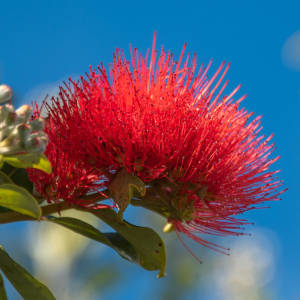Smelling the Roses
This is No.23 Harakeke, Artist Justine Ottey. Here is yesterdays blip that will link you to the other 'Stands Tall' arts project of Giant fibreglass Giraffe sculptures on the streets of Christchurch this summer.
After my Keep Active classes this morning where we had a go at Zumba, which was fantastic and I am sure I will be feeling it tomorrow! I stopped of and got a few shots of Harakeke on the way home. The day you can see has been very grey but at least the wind was blowing a gale. Not long after getting home it started raining and not long along we had a little sun.
Harakeke is the Māori name for Flax. Flax was the most important fibre plant to Māori in New Zealand. Each pā or marae typically had a ‘pā harakeke’, or flax plantation. Different varieties were specially grown for their strength, softness, colour and fibre content.
The uses of the flax fibre were numerous and varied. Clothing, mats, plates, baskets, ropes, bird snares, lashings, fishing lines and nets were all made from flax leaves. Floats or rafts were made out of bundles of dried flower stalks. The abundant nectar from flax flowers was used to sweeten food and beverages.
Flax also had many medicinal uses. The sticky sap or gum that flax produces was applied to boils and wounds and used for toothache. Flax leaves were used in binding broken bones and matted leaves were used as dressings. Flax root juice was routinely applied to wounds as a disinfectant.
For more information on the New Zealand Flax plant.

Comments
Sign in or get an account to comment.


